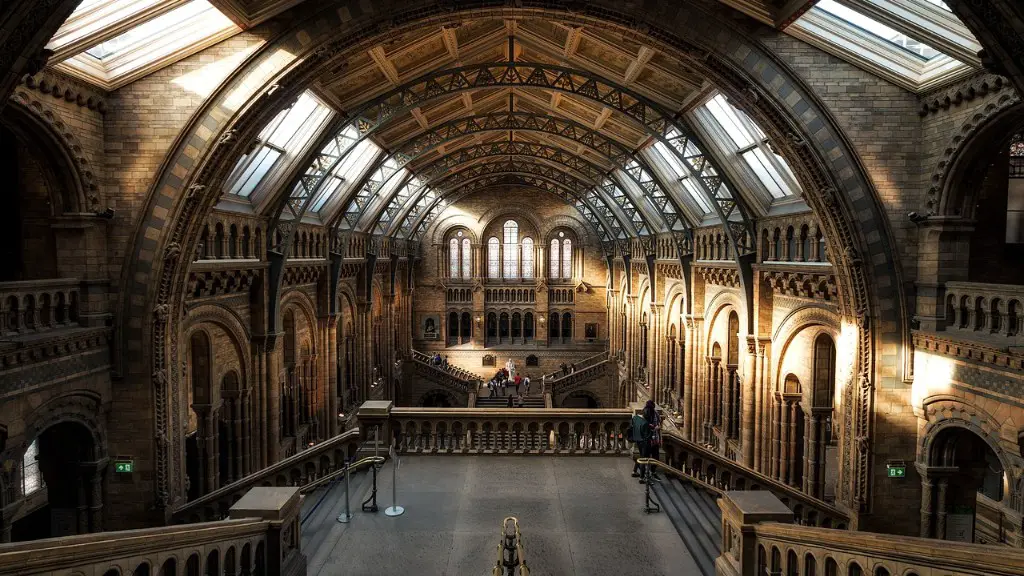The Use of Architecture to Catalyse Social Change
Architecture has long been seen as a tool to solve social problems, it being capable of providing architecture that is both beautiful and practical. The use of architecture for this purpose dates back centuries, numerous iconic landmarks being built for this purpose. Expanding on this idea, a more modern view is that architecture can act as a catalyst for social change, having an ambitious goal of enacting lasting change in communities.
This idea is gaining traction among both professionals and the public. Various reports illustrate this trend, with a number of organisations investing heavily in a move towards more sustainable and inclusive building practices. For example, evidence from the U.S. Department of Housing and Urban Development indicates that spending on affordable housing has increased steadily over the past few years, with further investments planned in order to realise this goal.
In order to understand how best to use architecture to catalyse social change, it is important to discuss it in terms of the elements that influence it. It is the responsibility of governments to create an environment that encourages investments in infrastructure, with these factors being: public policy, investment in education and technology, access to loans and grants, incentives for businesses to enter the market, and incentives for individuals to invest in their communities.
In addition to these elements, the approach to design is highly important, as it has the potential to inspire and galvanise public opinion. For instance, there are a range of projects that demonstrate how architecture can be used to draw attention to social issues, such as homelessness, climate change, and education. Through use of colour and shape, these designs can convey messages about the need for change and attention to the issue. Moreover, the use of public spaces, such as parks and squares, can provide both a physical and psychological environment that encourages people to come together, engage in discussion, and work towards a resolution to the issue.
The role of social media in architecture is also important in this regard. By leveraging the power of social media, the potential power of architecture can be spread far and wide. Using social media, people can engage in discussion about the use of architecture to catalyse social change, and share ideas, drawings and designs. Using social media can also put pressure on organisations and governments to listen to people’s voices and create changes for the better.
Public Engagement in Social Change Initiatives
Public engagement is an important part in architecture’s ability to catalyse social change. People need to be involved in the process in order to ensure that the designs are responsive to the needs and wants of the people. People should be encouraged to take part in decision-making processes that pertain to architecture, with discussions held towards this end.
In fact, there are a number of practices that actively seek to involve the public. For instance, crowd-sourcing is an approach that many designers are using to draw on the input of the public. Using this approach, designers can tap into the collective knowledge of the public, enabling them to incorporate the desired features into their designs.
Additional measures that can be taken to ensure public involvement are to hold workshops and consultations, organise exhibitions and open-days, and consult with stakeholders. An example of this is the place-making initiative in the Netherlands, which seeks to involve the public in the design process. This approach also involves people in the evaluation stage, with the public having the opportunity to provide feedback and make sure that their needs are being addressed.
The Benefits of Social Change Through Architecture
The use of architecture to catalyse social change has a range of benefits, from inspiring hope and optimism, to creating a lasting legacy. For example, it can enhance the sense of pride in a community, providing spaces for cultural events and gatherings. In addition, it can ensure cohesion and help to break down barriers amongst people, creating a sense of belonging within a society.
Furthermore, the use of architecture to catalyse social change can provide economic and social benefits. For instance, research has shown that there is a positive correlation between investment in architecture and economic growth, as well as employment and housing availability. Moreover, if the designs are environmentally sustainable, they can help to reduce emissions, conserve resources and create value.
Finally, it has been suggested that the use of architecture to facilitate social change has potential to help reduce crime and create safer communities. Well-designed environments can help to reduce the opportunity for crime to occur and promote feelings of safety and security. In addition, it can improve the mental health of individuals, thus contributing to the overall sense of safety.
Social Change Through Adaptive Reuse and Preservation
As well as designing from scratch, the use of architecture to catalyse social change can take another form – adaptive reuse and preservation. This form of design involves the renovation of existing buildings in order to bring them up to standard and help restore a sense of identity to a neighbourhood. For example, a number of historic districts have been provided with grants for renovation and restoration, with the aim of creating a sense of community and revitalising the area.
Adaptive reuse and preservation also provide economic benefits, as it can reduce the amount of money spent on constructing new buildings, leaving more money for other development initiatives. Moreover, it can help to reduce emissions and conserve natural resources, due to the use of existing materials.
Finally, and perhaps most importantly, adaptive reuse and preservation can provide a sense of identity and pride in the area, with long-standing historical buildings able to bring people together to celebrate their local community. There is a wealth of examples of this, with a number of structures being converted or restored to use as community centres and public amenity spaces.
Addressing Cultural and Global Challenges Through Architecture
The use of architecture to catalyse social change can extend beyond local neighbourhoods, into cultural and global issues. Architects must be aware of these issues, as well as the need to work across multiple disciplines, in order to create a more equitable world.
One such issue is the protection of cultural heritage sites. It is an issue that needs to be addressed, as there is a risk that many organisations are ignoring the importance of these sites. By not preserving the cultural heritage of a site, the sense of identity that the site gives its community may be lost.
Therefore, it is important to take action to protect these sites, with organisations such as UNESCO taking the lead. By preserving these sites, they are given an additional layer of protection, whilst still being able to be viewed by the public. This approach can be used to further illustrate the importance of cultural heritage sites to the local community.
Using Appropriate Technologies for Social Change
In addition to the design of a building, it is also important to consider the use of appropriate technologies to further catalyse change. It is always important to take into account any potential environmental or social impacts of the technologies being used, and to ensure that they are responsive to the needs of the population.
For instance, technologies such as smart infrastructure, Internet of Things (IoT) and blockchain can be employed to improve the efficiency of building operations, and can also provide transparency in decision-making processes. Moreover, Big Data and AI can be used to detect patterns of behaviour, allowing architects to tailor designs to better support social activities.
It is also important to consider the ways in which digital technologies can be used to involve the public in the process. For instance, digital simulations can be used to transform public spaces, whilst computer games can be used to educate people about their environmental and social impacts.
Innovating for Change Through Architecture
Innovative approaches in the use of architecture for social change must also be taken into account. For instance, evidence suggests that start-up firms are increasingly being used to help expand the landscape of innovative solutions, drawing on the expertise and enthusiasm of entrepreneurial individuals.
In addition, organisations must also be willing to think outside the box, so to speak. For instance, the use of data and analytics can inform design decisions, allowing for a more personalised approach to design. New technologies and materials, such as bamboo and biopolymers, are also being explored in the search for alternative solutions.
Finally, companies need to place greater emphasis on education in their operations, and provide resource materials, workshops and events. This will help to ensure that young professionals are aware of the potential of architecture to act as a catalyst for social change, and will also help to increase the number of individuals taking part in the process.
Encouraging Sustainable and Inclusive Practice Through Architecture
In order to ensure that the use of architecture to catalyse social change is effective, it is important for organisations to ensure that sustainable and inclusive practices are being employed. This means that organisations must seek to work with a range of stakeholders, from the public to private organisations, in order to ensure that everyone’s view is being taken into account.
In addition, organisations must ensure that their designs reflect the diversity of the people that inhabit the area. This can be achieved through the use of natural materials, the incorporation of communal spaces and the creation of accessible and safe environments. Research from the American Society of interior Designers also found that designs should include a focus on health and well-being, with an emphasis on comfort and ease in everyday activities.
Organisations must also take steps to ensure that they are employing ethical practices. This includes having responsible procurement policies and ensuring that they are working with companies who are taking into account the impacts of their practices.
Investing in Architecture for Social Change
In order for the use of architecture to be effective in catalyzing social change, there must be appropriate investment in the technology and personnel needed in the process. It is vital that organisations make appropriate investments in their people, providing them with the necessary skills and knowledge to effectively design responsible solutions.
Organisations must also ensure that there is enough funding available for projects. This can be done through a variety of different methods, such as grant funding, project-based funding, loan financing and private-public partnerships. Increasing the amount of investment in the design and construction process will ensure that projects are able to be completed in a timely and efficient manner.
Finally, organisations must also ensure that their projects are well-planned and well-executed, ensuring that the solutions provided match their desired outcomes. This can be done through use of modern technologies, such as 3D modelling, data analytics and cloud computation, which can all be used to ensure that projects are finished on time and within budget.


